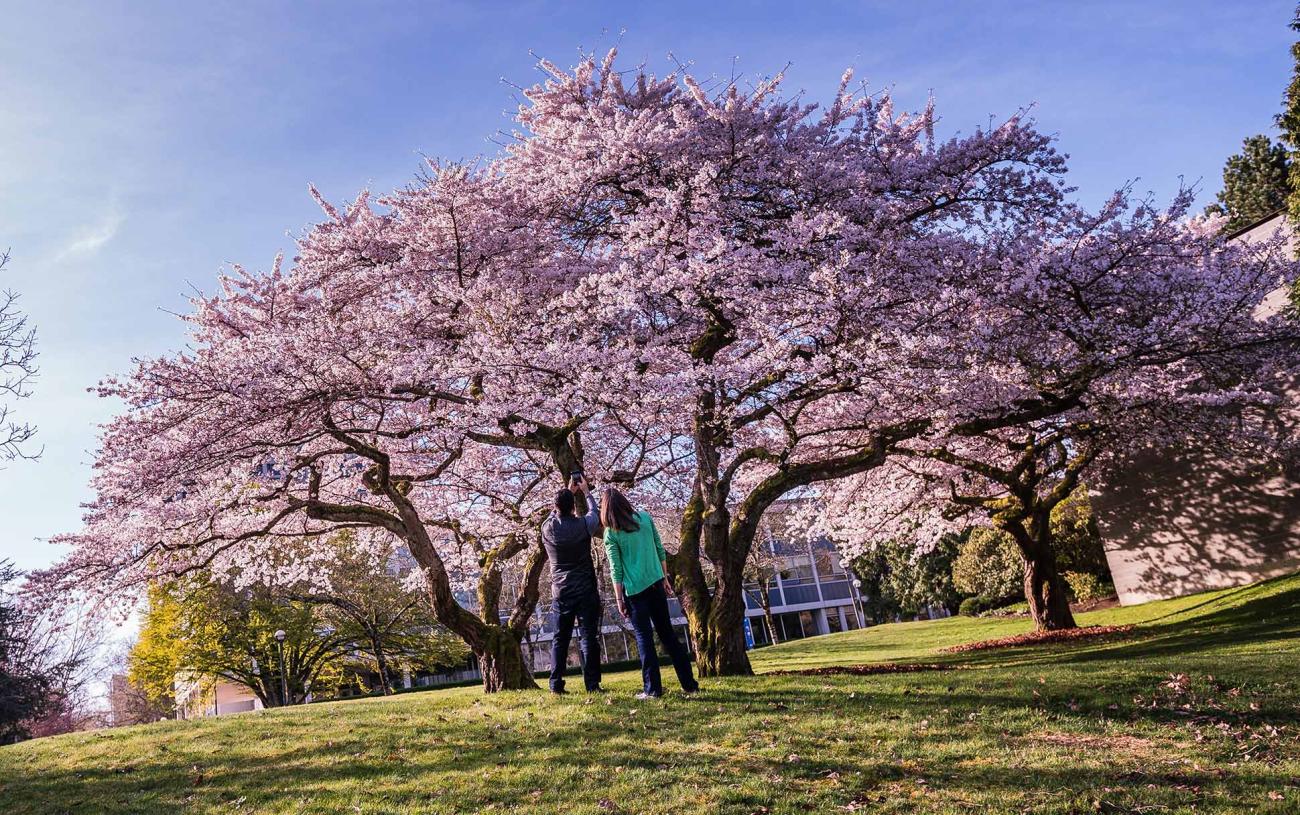When will cherry trees fully bloom? These scientists want your best guess
A global contest is tapping into the power of citizen science by inviting the public to predict this year’s peak bloom dates.
For the third year in a row, Dr. Elizabeth Wolkovich, a professor in the department of forest and conservation sciences at UBC, is inviting citizens worldwide to predict the peak bloom dates of cherry blossoms and win prizes.
Participants will focus on five locations known for their cherry trees: Vancouver, BC, Washington DC, New York City, Kyoto (Japan), and Liestal-Weideli in Switzerland. They’ll be given all publicly available data on cherry tree bloom dates to shape their forecasts.
Complex weather patterns make it challenging to predicting peak blooms each year, and it’s further complicated this year by an unusually warm winter.
We spoke with Dr. Wolkovich and her colleagues — Dr. Jonathan Auerbach and Dr. David Kepplinger from George Mason University, both data scientists and statistics professors — about why the competition is significant for both researchers and citizens.
Apart from telling us which days to take photos of cherry blossoms, why is it important to figure out when peak bloom occurs? And why involve citizens in this scientific exercise?
Wolkovich: The cherry blossom season, on average, has begun earlier and earlier over the past four decades, with some plants or locations having advanced two or three weeks. Engaging the public in predicting bloom times gets more people talking about climate change and how it’s affecting nature around us. The contest results, combined with scientific research, offer a collaborative approach that could also help improve the accuracy of our forecasting.
Auerbach: It’s difficult to forecast peak bloom more than 10 days in advance because blossom development depends on the weather and local microclimates, which are different every year. But our first two years of the competition produced some great results. Some of the forecasts were stunningly accurate, within a day or two of the actual peaks. We hope to attract even more contributions this year.
What do participants need to know?
Auerbach: Contestants can reside anywhere in the world, but they must build prediction models for all five sites. All entries must be completed by Feb. 29, and we’re planning to announce the contest results in late May or early June.
Kepplinger: Entries will be evaluated by a panel of judges. The judges are looking for creative entries that combine data-analysis techniques from statistics and machine learning with biological insight.
How do cherry trees detect the arrival of spring? How is this process affected by climate change?
Wolkovich: Cherry trees, like other temperate, woody plants, need a certain amount of cold days in the winter followed by enough spring warmth to trigger flowering. Many agricultural cherry and peach species planted in warm climates will not bloom fully — with many flower buds not opening due to lack of sufficient cold days. A major question we have in forecasting future springs is when climate change may reduce winter cold so much that this happens in other places and for other species. We know that peaches, for example, will fail to flower without enough cold but our models are not well tested beyond a few locations for a few species, which is why this competition is so important.
In addition, how early these cherry blossoms start is indicative of how lots of other early trees leaf out. That in turn determines how much carbon our forests take up, and so ultimately this could inform and improve predictions of climate change. In the future, we could apply these models to study the climate response of other plants and trees.
































